Illa Experience Hotel Ecuador review
Turn an exhausting long haul into an unexpected adventure at this culturally rich South American hotel.
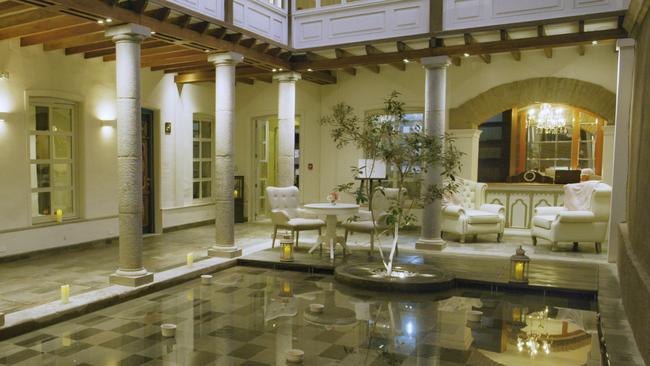
The old town of Ecuador’s capital, Quito, sprawls across a criss-cross of cobbled streets. Look one way up Venezuela St and the twin spires of the neo-Gothic basilica, inspired by Paris’s Notre-Dame, reach skywards. Look the other and a winged statue of the Virgin Mary, a gleaming patchwork of more than 700 aluminium sheets, gazes from its elevated lookout on Panecillo Hill. In between are at least half a dozen churches, evidence of the ongoing influence of the Catholic Church. The Spanish arrived in the 1530s and brought their faith along. However visitors may feel about the conquerors’ 400-year rule of the Andean country, they certainly left an impressive mark on Quito’s streetscape. Turn any corner and you’ll find a grand colonial edifice or a 16th-century theatre or palace, which is why the city became the first to be granted World Heritage status by UNESCO in 1978.
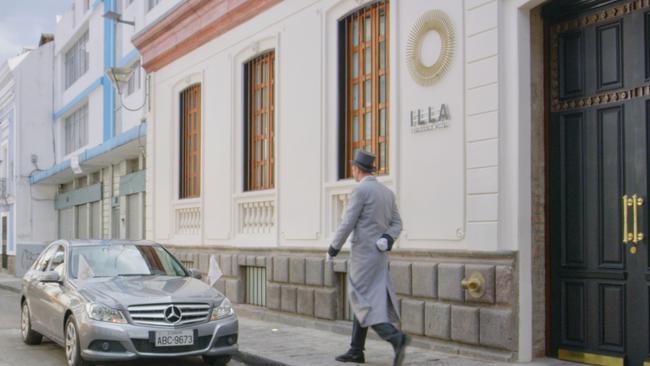
Tucked a 10-minute stroll downhill from Independence Plaza is Illa Experience Hotel. For travellers en route to the Galapagos Islands or the Amazon, it is an ideal place to regroup after the long haul from Australia. Opened by a local family in 2018 after seven years of renovations in one of the city’s first mansions, the hotel is a boutique oasis with Tardis-like qualities. You might walk past the building barely giving it a second glance, but step through the heavy wooden doors and all is revealed. A flight of stairs leads down to a courtyard with a shallow decorative pool at its heart. It is distinctly Moorish in style, and in keeping with the property’s name – Illa means “sacred lights” – the water mirrors the moon and stars at night.
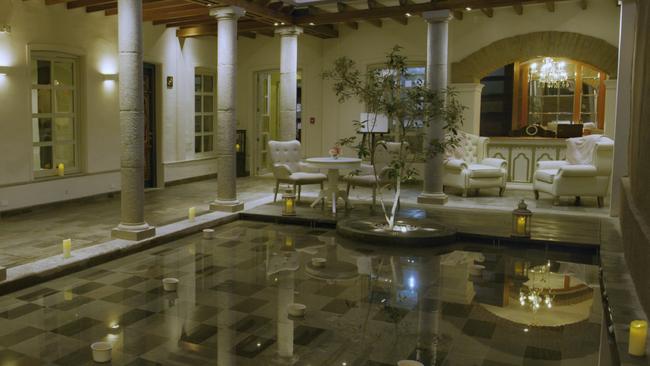
The three-storey property has only 10 rooms, including two generously proportioned master suites and two street-view suites. On the ground floor, which dates from the 17th century, the design of doors leading to three guestrooms represents the country’s gradual conversion to Catholicism, from plain timber to a vibrantly painted portal. On the second floor, walls of windows create a conservatory effect, flooding the corridors with natural light. Original artworks adorn the walls while nooks with antiques and comfy couches invite guests to enjoy the public spaces, including a small terrace with city views.
On this level, doors to guestrooms are oversized affairs with huge circular brass handles in their centre. There’s no card swiping here; guests are issued with an old-fashioned key.
My master suite is an inviting space in a pleasing palette of sage green and white. A seating area is set aside for TV viewing with two wing-backed armchairs and ottomans. The bathroom, in marble, has an antique claw-foot bath, rain shower, separate toilet and L’Occitane’s delicious bergamot amenities. After almost 30 hours of travel, the king-size bed looks heavenly, dressed in hand-embroidered linen and backed by a carved screen that replicates a design in one of Quito’s many houses of worship. A painting of a Quechuan woman adorns the wall; out the window, Mary glows against the night sky. The ceiling is lined with finely corrugated tin painted mint green and white, and edged with finely ornate cornicing (there’s a similar work in reception that was rescued during the renovation and brought back to life). The lighting is a gentle mix of filament bulbs mounted on bronze wall fittings and a huge pendant globe with pressed-metal lining.
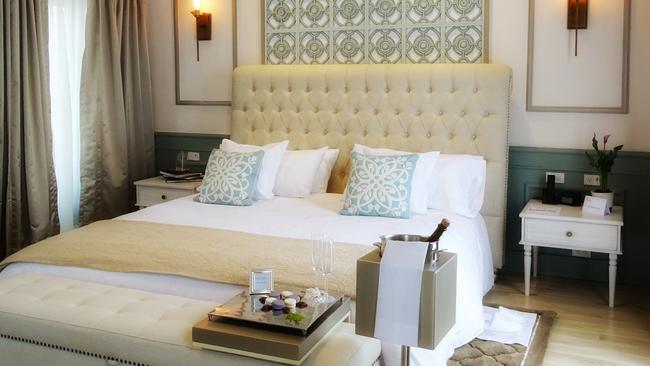
Attention to detail is obviously a priority. USB stations and power points are abundant. A flask of hot water is on hand to prepare a special tea if Quito’s altitude, at more than 2800m, is causing headaches and thirst. Another thoughtful touch is the warm herbal compress to ease travel aches. During my stay I’m impressed with the care staff take of guests. Early morning departures for the airport are chauffeured and accompanied by a breakfast box. When I dine alone in the old town one night, Illa’s concierge insists a staff member chaperones me back to the hotel. I feel thoroughly pampered.
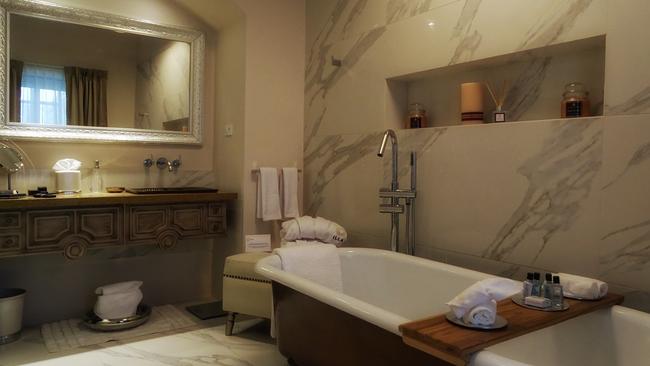
Breakfast and dinner are served in the acclaimed Nuema restaurant on the ground floor. The former comprises a selection of fruit, cereals, yoghurt plus optional hot dishes. Of an evening, guests can go the whole hog with a tasting menu or dine a la carte on Ecuadorean classics with refined modern touches. Dishes such as ceviche and bolon de verde, balls of mashed plantain filled with pork, are deconstructed while respecting tradition and local ingredients. Not surprisingly, wines are largely South American.
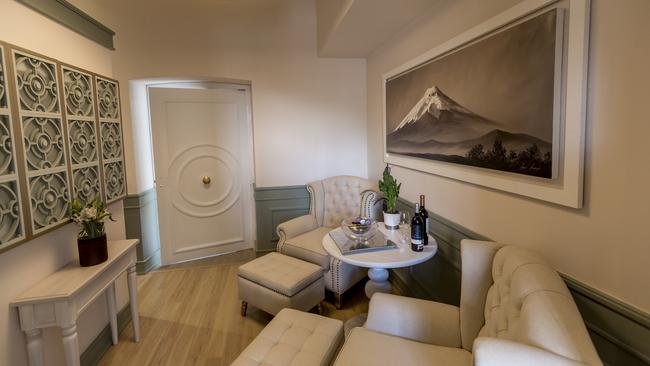
The hotel often hosts artisans in the late afternoon, and I return from my meandering to meet Olga, a Quechuan woman with nimble fingers. She is a fourth-generation maker of Panama hats, some of which take six months to create and fetch an eye-watering $US3000. She’s wearing regional dress – colourful skirt and blouse, her ebony hair in long plaits, elaborate strands of beads around her neck and, of course, a hat. She shows me how she shreds palm leaves into strips, the finest threads reserved for her top-shelf work. She’s been creating hats since she was eight and her digits work in a blur. I’m invited to try my hand and my attempts are embarrassingly amateur though Olga is kind in her praise. When I ask how many hats she’s made, she laughs and says, “thousands”.
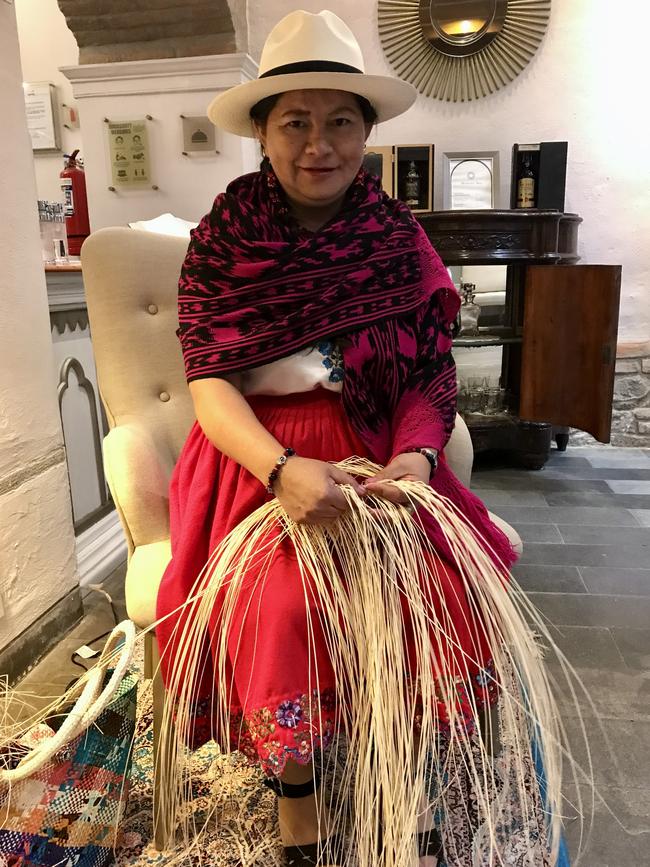
If I could stay longer, I might meet more locals in this tranquil place and learn to engrave wood, make sweets or restore antiques. Instead, I thank Olga and wish her well. I have a date with a blue-footed boobie.
In the know
Illa Experience Hotel is on Junin St in San Marco, Quito. Rooms from $US459 ($660) a night.
Penny Hunter was a guest of Illa Experience Hotel and Aqua Expeditions.


To join the conversation, please log in. Don't have an account? Register
Join the conversation, you are commenting as Logout